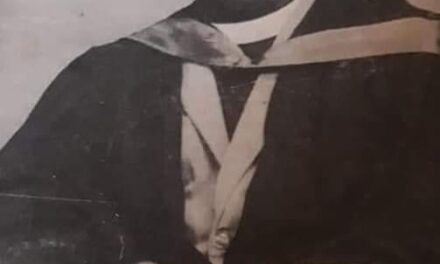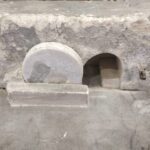“Christ in the heart of every man who thinks of me,
Christ in the mouth of every man who speaks to me;
Christ in every eye that sees me,
Christ in every ear that hears me” – St Patrick
Today is St Patrick’s Day. In one of my publications a few years ago, I wrote that St Patrick’s Day is more important than what he did in Ireland. St Patrick’s symbolises a model for a new generation of missionaries in this season and at a time when the church is declining and losing its identity, authority, and bearing. St Patrick, known before as Succat, meaning ‘warlike’ in modern Welsh, was born about ‘the year A.D 372 A.D to a British family of Calpurnius, deacon of the church of Bonavern and Conchessa, sister to the celebrated Martin, archbishop of Tours. At his tender age, Conchessa instilled into Succat’s heart the doctrines of Christianity.’ [1]
At sixteen years of age, Succat was captured by a band of Scottish slave-dealing pirates who sold him to the Druid chieftain, Milcho, who reigned in the north of Ireland. For six years, Patrick herded the cattle of this ruthless pagan chieftain. In the solitary pasture, Succat, ‘the young slave called to mind the divine lessons his pious mother had so often read to him.’ Like the prodigal son in the heathen land, he surrendered his life to Jesus, of whom Conchessa had so often spoken. Patrick’s “Confession” summarises his conversion: “When I was a youth, I was taken captive before I knew what I should desire or seek, or what I ought to shun.” He met the Saviour in his servitude in the bleak forest of Northern Ireland, and God might have used the weird Druid ceremonies to inspire him to become a missionary to the heathen people.
St Patrick’s indigenisation strategy[2] and voice still speak today, especially to a new generation of missionaries not only to the heathen people but to a post-Truth culture and nations to take up the banner to preach the Gospel and spread Scriptural holiness across the nations.
In one of his publications, ‘Taking the Gospel to Ireland and Beyond’, Gordon Robertson explained that ‘Patrick went into the villages of Ireland preaching the Gospel not in Latin—the language of the church—but in the language of the people. As they became Christians, he selected converts and trained them to become leaders of their local congregations. He understood the importance of raising leaders from within the community rather than imposing foreign priests on them.’ [3] St Patrick developed and trained missionaries that ‘went beyond Ireland’s borders to convert the nation of Scotland.’
St Patrick’s and John Wesley’s methods remain a model for effective missional leadership, church health, and growth because they mirrored the Apostle Paul’s, who spent ‘time in a place evangelising, having power encounters, and converting people. He would then raise pastors from within their midst, appointing and laying hands on them.’
As a part of the new generation of missionaries, especially to the United Kingdom, Ireland, and Europe in general, just as St Patrick lifted the Irish out of the darkness of paganism into the glorious light of the Truth, we are called to do greater exploits again. Patrick came as a slave to a country which was ‘spiritual but had a spirituality which lacked roots.’ St Patrick stirred up the Celtic belief within the Irish people with purity in Biblical doctrine. St Patrick, a Bible-reading, Bible-believing, Bible-preaching missionary, changed the course of the world’s history with Celtic Christianity, shaping the destinies of the Church of the West. It is time to light the Revival fire in the West again, just as ‘St Patrick challenged the “royal authority by lighting the Paschal fire on the hill of Slane on the night of Easter Eve … the occasion of a pagan festival at Tara, during which no fire might be kindled until the royal fire had been lit.” Anointed and filled with the Holy Spirit, St Patrick challenged the king, the druid priest, and all the forces of hell and the flame of revival swept over all of Ireland with tears of repentance. In the year 428 A.D Easter morning, St Patrick and his assistant missionaries marched into the monarch’s presence. They told him that Christ was the world’s light and preached that Jesus was crucified and risen from the dead with such persuasive eloquence that the king was born again by the Spirit of the living God.
[1] http://dejiokegbile.com/st-patricks-day-in-lent/
[2] http://dejiokegbile.com/gospel-beyond-ireland-st-patrick-apostle-of-indigenisation/
[3] https://www2.cbn.com/devotions/taking-gospel-ireland-and-beyond?inid=70b0951f-cb85-











Recent Comments